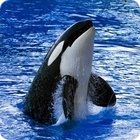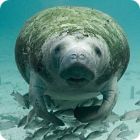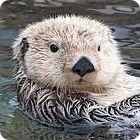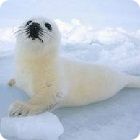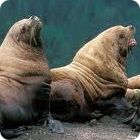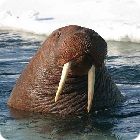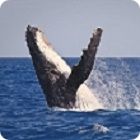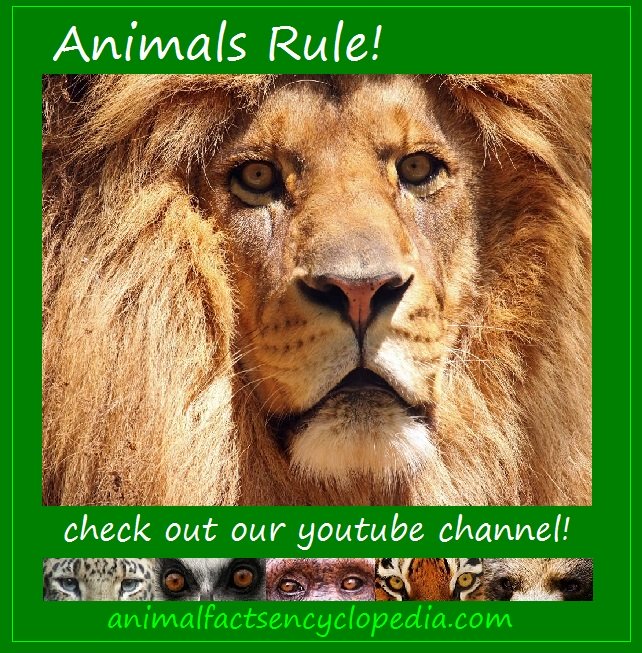ocean Animals
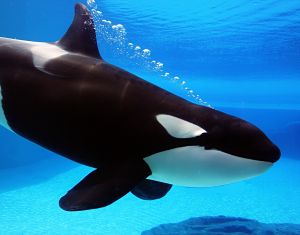
Ocean animals consist of four main types of warm-blooded, live-bearing marine mammals - whales, seals, manatees and otters.
The evolutionary paths of these complicated animals finds them crawling out of the prehistoric ocean onto dry land as cold-bloodied creatures hundreds of millions of years ago.
Once on land, they developed lungs and limbs, their bodies gained the ability to regulate their own temperature and they began to bear live young. Then, some 50 million years ago, they returned to the sea again as robust mammals.
Each family transformed back to sea animals in varying degrees.
The otters retained their hind limbs and nimble front paws for grasping food. On the others, the digits of the feet webbed back together into powerful flippers.
The return to the sea, with its vast food sources and immense territories, has been a very successful one for these ocean animals.
The largest living animal on Earth - the blue whale - and the biggest population of large carnivores - the seals- evolved only after they returned to the depths.
With the dolphin and the sea otter among them, ocean animals include some of the most complex, fascinating and intelligent beings on our planet. - Ocean Animals Facts
start with the sea otter
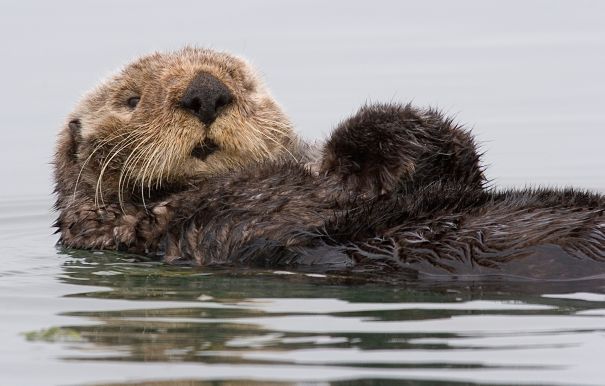
Although sea otters spend virtually all of their lives in the ocean, two things separate them from the other marine mammals, and make some scientists question them being included in the category.
First and most obvious, sea otters have four usable legs with separate but webbed toes on each hind foot, and dexterous, hand-like front paws.
Second, although very well padded, sea otters do not have the same extensive blubber layer that all the other marine mammals bodies are lined with.
Instead, the sea otter has what was nearly its downfall, the most densely furred and warmest coat in the animal kingdom, with over 800,000 hairs per square inch!
Sea otters, as opposed to river otters, eat and sleep on the water, wrapping their buoyant bodies in seaweed to keep from drifting while they nap.
segue to some seals - The pinnipeds
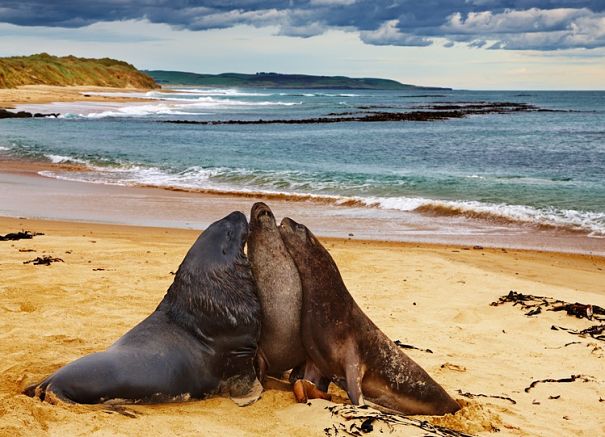
Seals, sea lions, and walruses are all pinnipeds or "fin-footed" mammals. Venturing further from shore, and deeper into the depths than the otters, the seals are the next evolutionary step in our return to the sea.
The eared seals, including sea lions and fur seals, have small external ear flaps, powerful forward angled shoulder blades, larger front flippers and more flexible, separated hind flippers than the "true seals".
Eared seals spend a great deal of time on land, breeding and sunning on the shores. With long, powerful front flippers, their natural position is upright with the chest raised off the ground.
Their rear legs are two separate, front-facing flippers that can be rotated under the body, and they can rise up and move around with a two beat gate. Also often referred to as the "walking seals", the eared seals can actually walk, and even run, quite rapidly when necessary.
The "true seals" have returned even farther back to the ocean. They have no external ear flaps, smaller front flippers and rearward facing hind limbs that are fused together into one scalloped flipper, like a mermaids tail.
They move across land by stretching their upper bodies out and arching their backs to pull themselves forward.

True seals also swim differently from eared seals, getting most of their propulsion from their fused, tail-like rear flippers and undulating motions similar to a dolphin to propel themselves, while the eared seals use their strong front flippers as big, highly effective oars, appearing to fly through the water like birds.
Walruses have skeletons designed more like the eared seals, but have no ears. They move like the true seals in the water, but like the eared seals on land, and so are somewhere in between these two groups, and are classified in a genus of their own. - Ocean Animals Facts

no turning back now: here come the cetaceans!
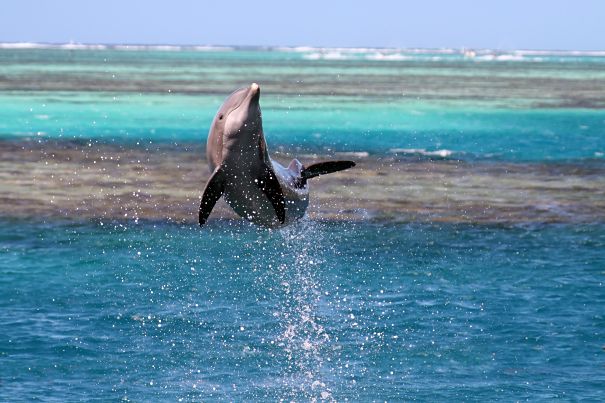
Living their entire lives in the water, with just a little bit of air time when "breaching", the cetaceans - whales, dolphins, porpoises and narwhals- are separated into two groups, toothed whales and baleen whales.
Baleen is a strainer-like bony material that most of the largest whales have instead of teeth. The largest animal in the world - the blue whale- is a baleen whale that feeds on the tiny plants and creatures that remain in its mouth after it strains the water out by raising its tongue to the roof.
Dolphins, orcas, and the remarkable sperm whale of "Moby Dick" fame are toothed whales, and have a more typical diet and feeding habits.
Dolphins and whales live their lives like fish - entirely in the water - yet they have no gills and can't breath underwater. Instead, their nostrils have moved to the top of their heads and come together as one large blow-hole that allows them to take in breaths while barely breaking the waters surface.
X-rays of dolphin flippers reveal the remnants on life on land - three long finger-like digits, and one very short bone that is disappearing through adaption to a fully aquatic life.
Scientists believe the dolphins ancestors still lived at least partially on land about 65 to 70 million years ago.
a few more ocean Animal facts
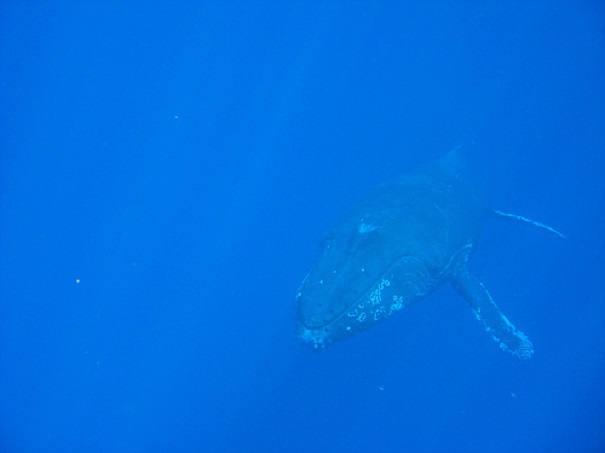
- There are two major types of seals - the "eared seals" with external ears like the sea lion and fur seal, and the "true seals" who have no external ears.
- The sperm whales massive oil-filled head prevents it from getting "the bends" when it surfaces after deep water dives.
- The largest "true seal" is the elephant seal. Males can be sixteen feet long and have a foot-long "trunk"
- Sea otters can float for endless hours on their backs, and use their bellys as dinner plates.
- At 90 feet long, the blue whale is the largest animal on earth.
- The sea otter is the largest member of the weasel family, but the smallest marine mammal.
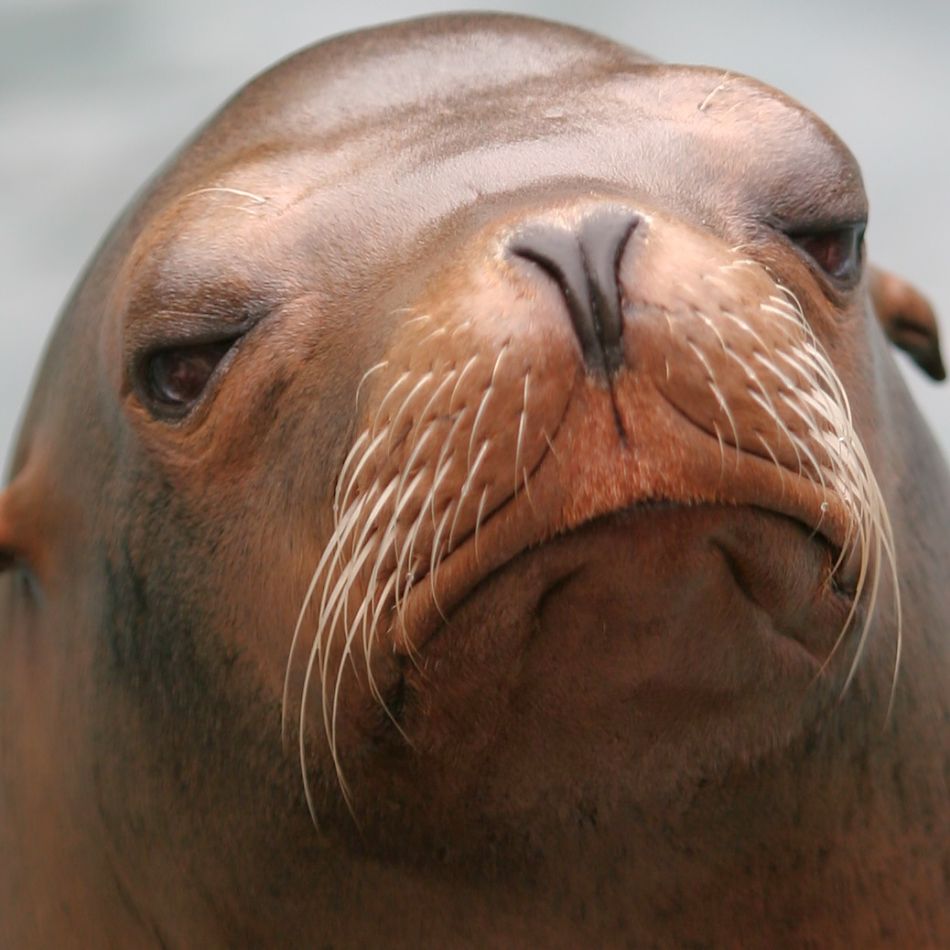
Recent Articles
-
African Animals - Animal Facts Encyclopedia
Oct 11, 16 10:27 PM
African Animals facts photos and videos..Africa is a wonderland for animal lovers, and a schoolroom for anyone who wants to learn about nature, beauty and the rhythm of life -
Baboon Facts - Animal Facts Encyclopedia
Oct 11, 16 10:26 PM
Baboon facts, photos, videos and information - Baboons are very distinctive looking monkeys with long, dog-like snouts and close set eyes. -
Great Apes Facts - Animal Facts Encyclopedia
Oct 11, 16 10:25 PM
Great apes facts, photos and videos..Human beings did not evolve from chimpanzees, modern chimps and gorillas do not appear in the fossil records until much more recently than homo sapiens..

